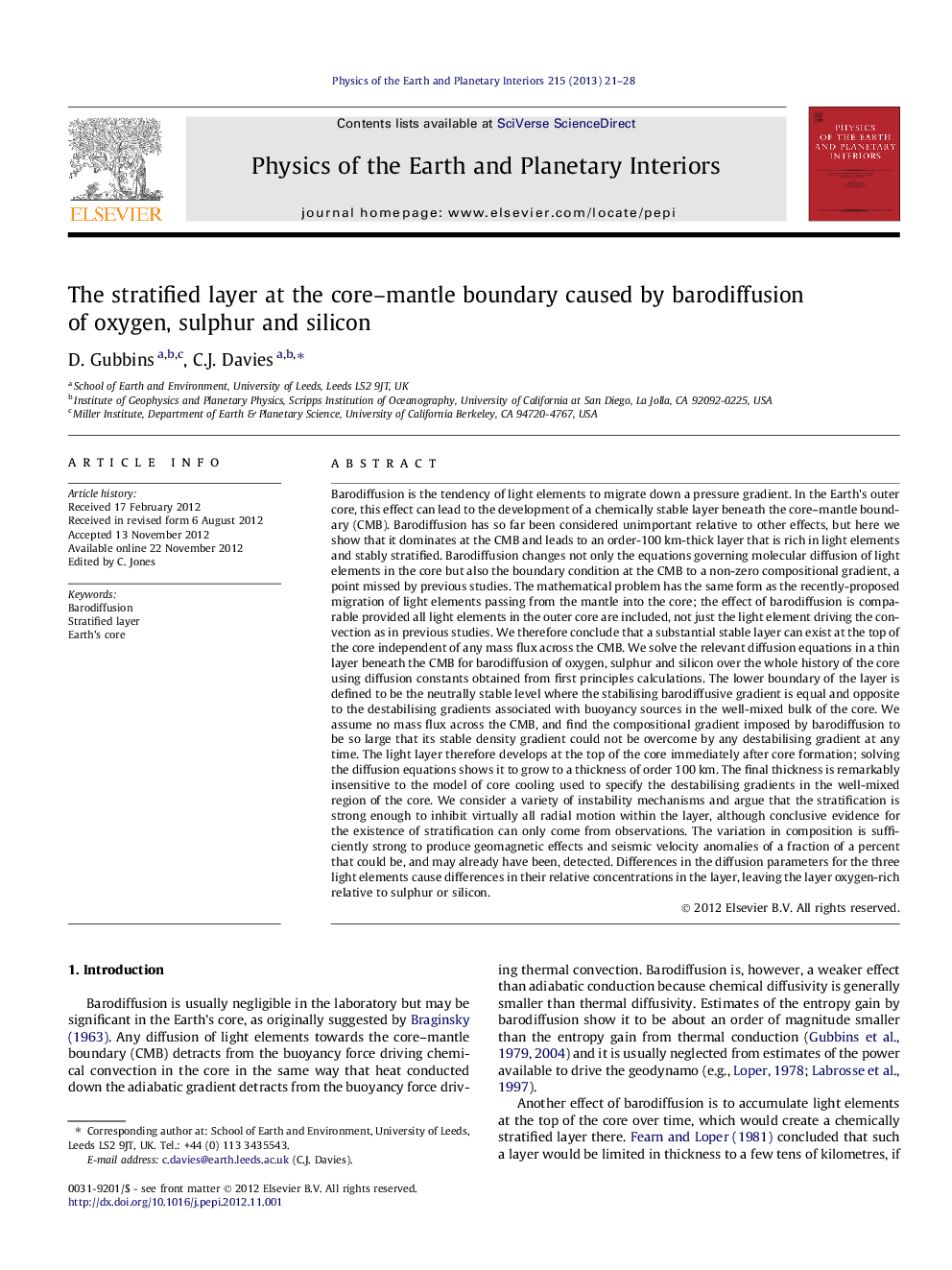| کد مقاله | کد نشریه | سال انتشار | مقاله انگلیسی | نسخه تمام متن |
|---|---|---|---|---|
| 4741693 | 1641526 | 2013 | 8 صفحه PDF | دانلود رایگان |
Barodiffusion is the tendency of light elements to migrate down a pressure gradient. In the Earth’s outer core, this effect can lead to the development of a chemically stable layer beneath the core–mantle boundary (CMB). Barodiffusion has so far been considered unimportant relative to other effects, but here we show that it dominates at the CMB and leads to an order-100 km-thick layer that is rich in light elements and stably stratified. Barodiffusion changes not only the equations governing molecular diffusion of light elements in the core but also the boundary condition at the CMB to a non-zero compositional gradient, a point missed by previous studies. The mathematical problem has the same form as the recently-proposed migration of light elements passing from the mantle into the core; the effect of barodiffusion is comparable provided all light elements in the outer core are included, not just the light element driving the convection as in previous studies. We therefore conclude that a substantial stable layer can exist at the top of the core independent of any mass flux across the CMB. We solve the relevant diffusion equations in a thin layer beneath the CMB for barodiffusion of oxygen, sulphur and silicon over the whole history of the core using diffusion constants obtained from first principles calculations. The lower boundary of the layer is defined to be the neutrally stable level where the stabilising barodiffusive gradient is equal and opposite to the destabilising gradients associated with buoyancy sources in the well-mixed bulk of the core. We assume no mass flux across the CMB, and find the compositional gradient imposed by barodiffusion to be so large that its stable density gradient could not be overcome by any destabilising gradient at any time. The light layer therefore develops at the top of the core immediately after core formation; solving the diffusion equations shows it to grow to a thickness of order 100 km. The final thickness is remarkably insensitive to the model of core cooling used to specify the destabilising gradients in the well-mixed region of the core. We consider a variety of instability mechanisms and argue that the stratification is strong enough to inhibit virtually all radial motion within the layer, although conclusive evidence for the existence of stratification can only come from observations. The variation in composition is sufficiently strong to produce geomagnetic effects and seismic velocity anomalies of a fraction of a percent that could be, and may already have been, detected. Differences in the diffusion parameters for the three light elements cause differences in their relative concentrations in the layer, leaving the layer oxygen-rich relative to sulphur or silicon.
► Barodiffusion of light elements chemically stratifies the top of Earth’s core.
► We model barodiffusion analytically using a mix of O, S and Si.
► A stratified layer develops immediately after core formation and grows to 100 km.
► Layer thickness is relatively insensitive to choice of model parameters.
► Variation in composition produces seismic velocity anomalies that could be detectable.
Journal: Physics of the Earth and Planetary Interiors - Volume 215, February 2013, Pages 21–28
